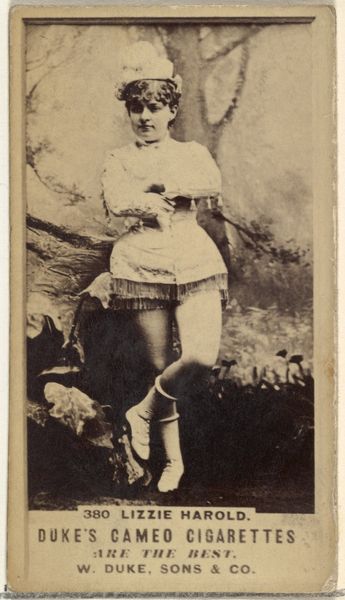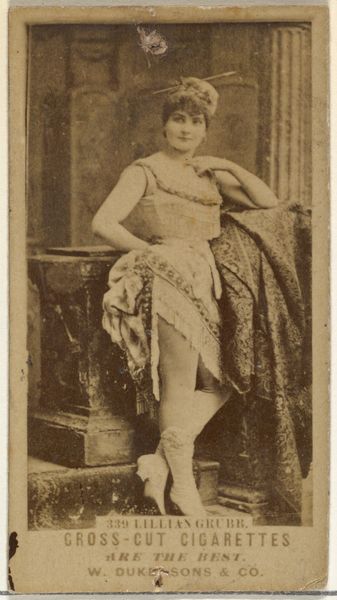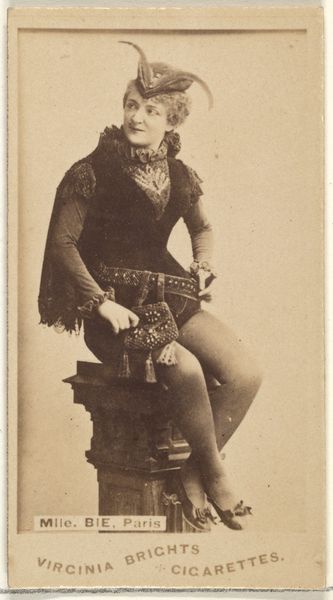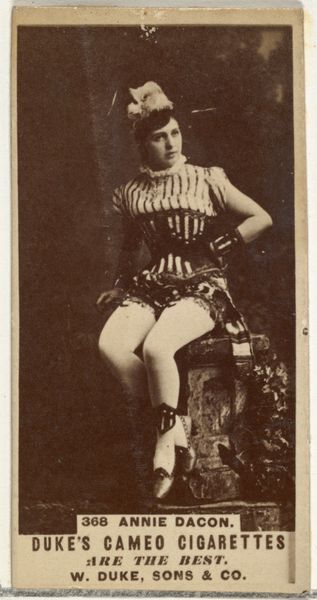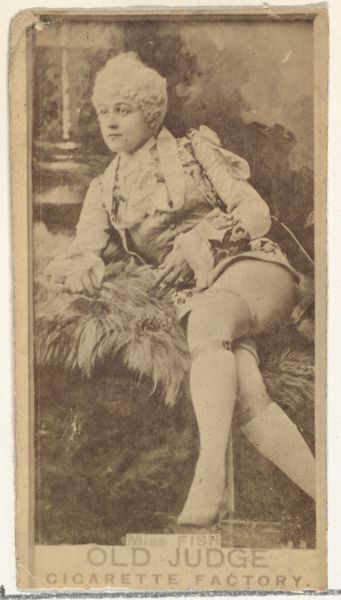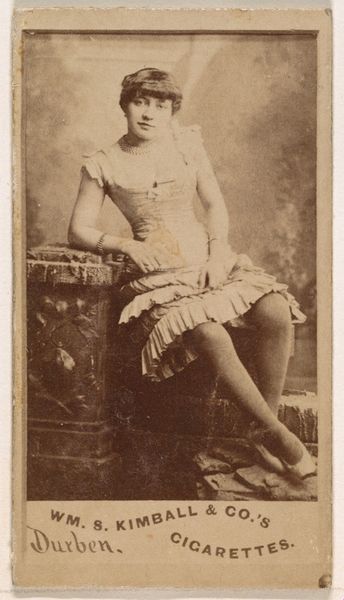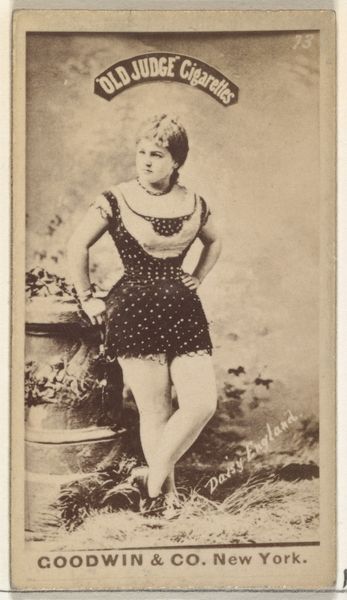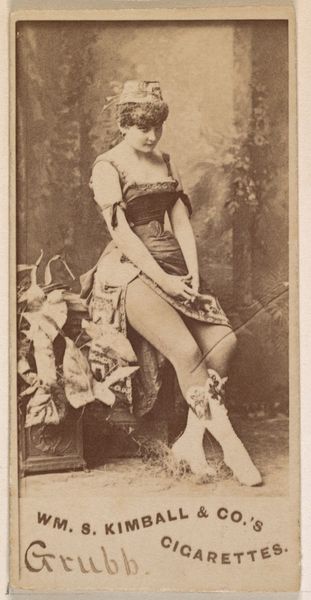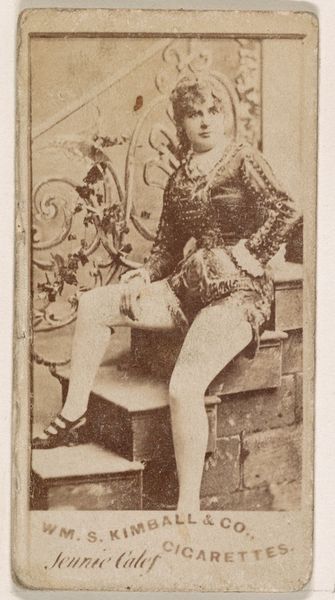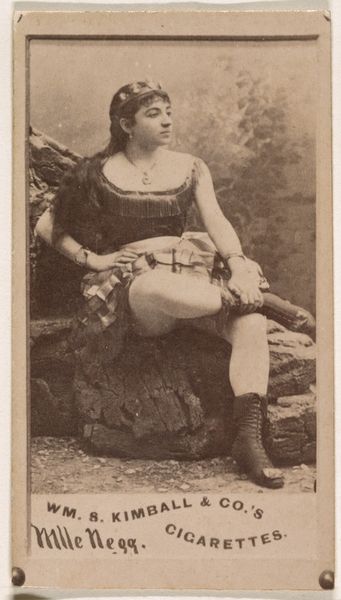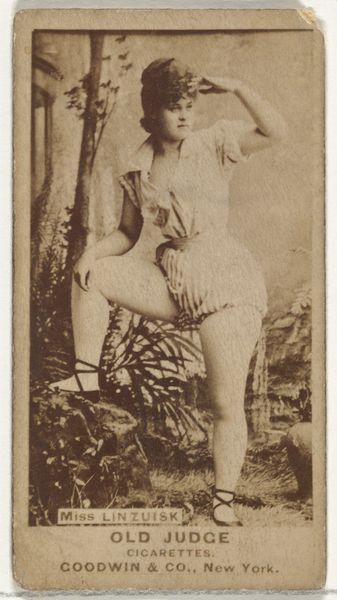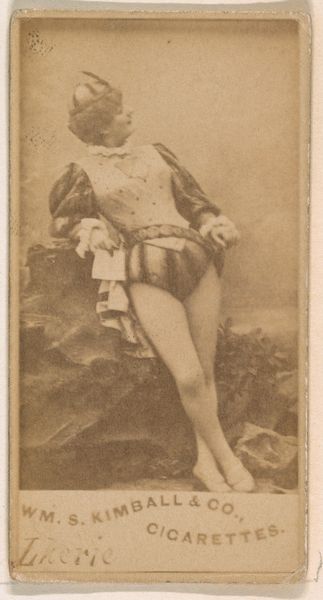
Gerard, from the Actors and Actresses series (N45, Type 1) for Virginia Brights Cigarettes 1885 - 1891
drawing, print, photography, albumen-print
portrait
drawing
toned paper
figuration
photography
men
genre-painting
albumen-print
Dimensions: Sheet: 2 3/4 x 1 3/8 in. (7 x 3.5 cm)
Copyright: Public Domain
Curator: This is "Gerard, from the Actors and Actresses series" created between 1885 and 1891 by Allen & Ginter, an albumen print that's part of a series made for Virginia Brights Cigarettes. Editor: My immediate impression is of staged exoticism and commerce combined, a rather bizarre theatricality designed to sell tobacco. There is something unsettling and exploitative in this combination of what appear to be circus outfits or dancer costumery displayed in marketing materials, something about a gender bending performance, a burlesque that's a commodity. Curator: Precisely. The context of cigarette cards is key. These were essentially miniature advertisements slipped into cigarette packs. Examining these through a lens of social and economic history, it becomes apparent that Allen & Ginter are capitalizing on contemporary fascination with performance and celebrity. But look closer, at this albumen print depicting an image of an individual styled as a female dancer to entice consumers to purchase their cigarettes. Who *is* the gender bending figure being marketed? Editor: And the image itself. The soft focus and sepia tone lends the image an air of antiquity. The combination of staged jungle foliage in the backdrop and a Greco-Roman stool creates an odd sense of place, while hinting towards cross-cultural borrowing that really feels like cultural appropriation from a present-day point of view. Who benefits from that sort of gender bending on stage, who can afford to attend a vaudeville or circus show, who consumes cigarettes—these sorts of questions should also shape how we understand the imagery, don't you agree? Curator: I couldn't agree more. Thinking intersectionally, the layering of performance, identity, and the mechanics of commerce become so palpable. The art isn't just the photo, it's the system it operates within and reveals. The choice of actors and actresses, who they are, what they perform, how they perform--and then tying it into a commodity available for consumption. Gender non-conformity itself becomes something marketed, purchased. Editor: And thinking about institutions – images like these populate museum collections now, but they are there with layers of socio-political complexity. Thinking about the ethics of display – how should these cards be shown and understood today? They hold immense cultural weight for such small objects, inviting dialogue on the politics of imagery that still affect marginalized identities and voices. Curator: I appreciate your final remark. We often think of art as a product. But really, it should function as a prompt, inviting questions and sparking critical discussions and awareness around gender and capitalist consumption. Editor: Well, ultimately, such dialogues can foster the understanding of art’s role as a vehicle for political and societal transformations through historical awareness.
Comments
No comments
Be the first to comment and join the conversation on the ultimate creative platform.
